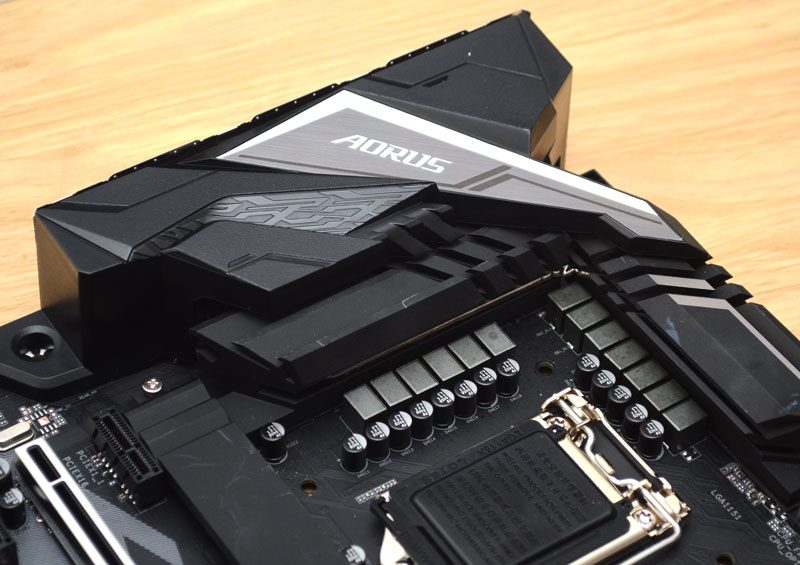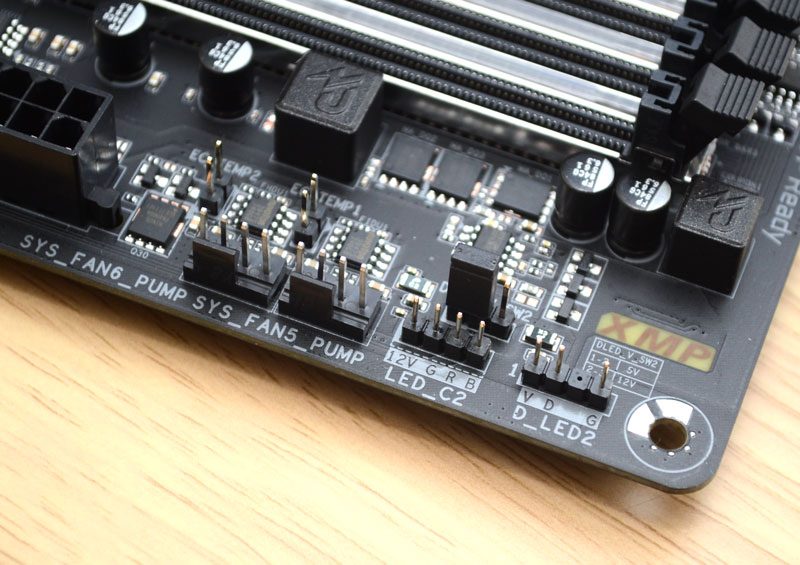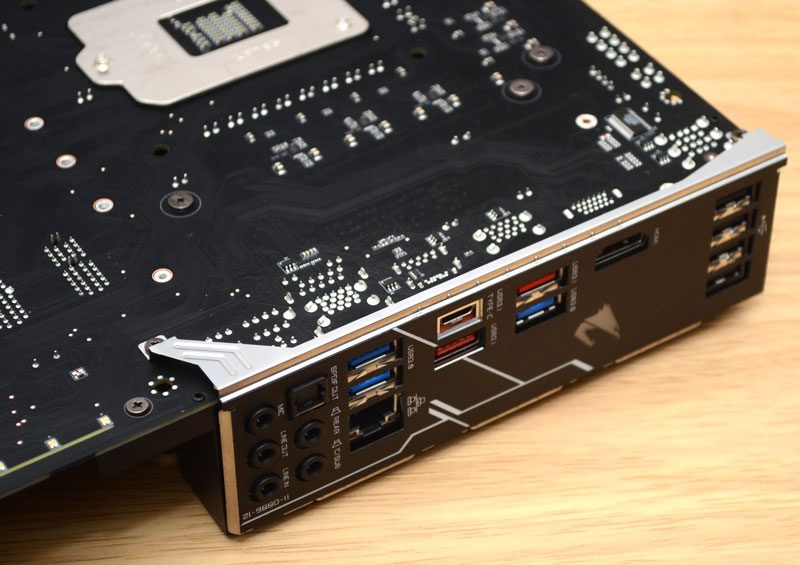AORUS Pro Gaming Z390 Motherboard Review
Peter Donnell / 6 years ago
A Closer Look
The Aorus Pro is hardly a new design, and borrows pretty much entirely from the existing Aorus product range. This is basically Z370 with a few tweaks; the best of the best if you will. Of course, both Z370 and Z390 each support both 8th Gen and 9th Gen CPUs (with BIOS updates). That being said, this is still a great looking motherboard, and exactly what we would expect from Aorus.

The heatsinks on the motherboard are suitably chunky. Again, this should help keep that power delivery hardware nice and cool; very important while overclocking.

There’s a huge heat pipe connecting the two sections, and two large metal heatsinks on the top to share the load.

Armour!
Speaking of durability, the DIMM slots are reinforced, which should prevent the board flexing. There are three strips of RGB lighting tucked in between them also, giving you some visual customisation.

There are both 12V and 5V addressable RGB headers, and plenty of fan/pump headers here also.

You’ll find a few headers on the bottom row for USB 2.0, and further up, front panel headers for both USB 3.1 and Type-C with Gen 1 support.

There are six SATA 6Gbps ports on the motherboard; nothing too crazy, but certainly more than enough.

Along the bottom of the motherboard, another pair of RGB headers, as well as plenty more fan headers.

Powerful Audio
One of the best features here is the audio. You’ll find the superb ALC1220-VB Enhanced chipset, backed up with a set of WIMA Audio Capacitors. It’s one of the best choices for on-board audio, which has certainly come a long way in recent years!

Gamers rejoyce, with two armored PCIe slots setup to support the bulk of modern graphics cards with ease. Of course, they also look pretty slick, but I would have liked the third slot armoured purely for aesthetics.

There are two M.2 mounts on offer, each fitted with a large heatsink and shield. Not only do these look great, but they’ll protect your drives, and keep them running cooler.

Finally, we have the Rear I/O. Connectivity is pretty good. There are four USB 2.0 at the top, three USB 3.0, two USB 3.1, and a Type-C further down. Beyond that, you’ll also find an HDMI, but no DP, as well as the audio and LAN ports. It’s all as you would expect really, but more than enough for most system builds.

Finally, let’s not forget the pre-fitted I/O shield. I’m so happy to see this become more commonplace.




















